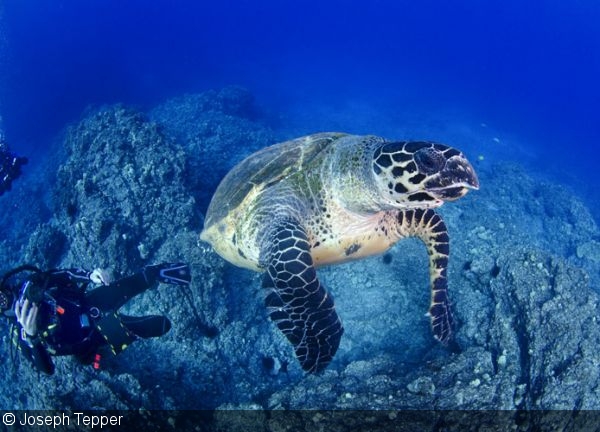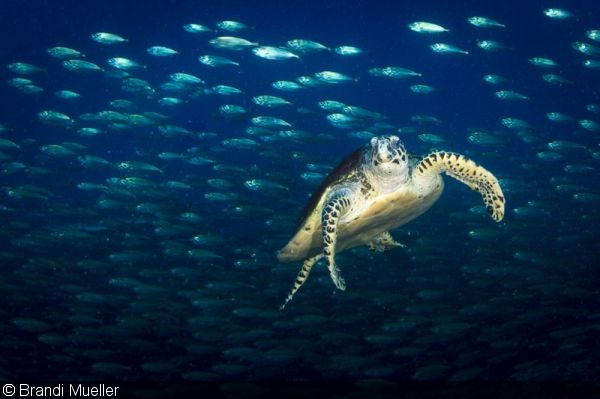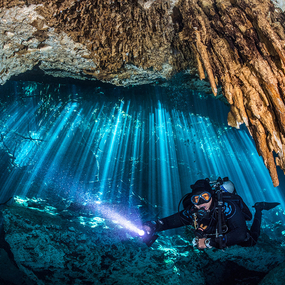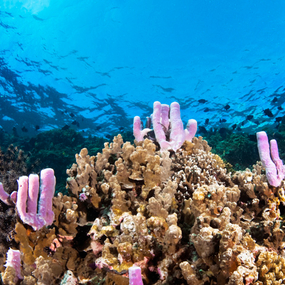Photographing Sea Turtles
Without question, one the most popular marine creatures is the turtle. Green, hawksbill, loggerhead, leatherback—we love every one. And best of all, they can be found and photographed in almost every destination. With a little bit of preparation and technique you can separate your turtle shots from the rest and produce images that even Crush the turtle from Finding Nemo would call “righteous!”
Types of Turtles to Photograph
There are seven species of sea turtles, which inhabit mostly coastal, tropical waters. The seven species (in order of frequency of encounter) are hawksbill sea turtle, green sea turtle, leatherback sea turtle, Olive ridley sea turtle, Kemp’s ridley sea turtle, loggerhead sea turtle, and flatback sea turtle.
The hawksbill is the most commonly seen and photographed turtle, inhabiting coastal areas on every major continent. Also common, the green sea turtle is most often photographed in the waters off Hawaii and throughout the Pacific.
Unfortunately, four of these species of sea turtles are classified as endangered, making them a more rare occurrence to see and photograph. The Kemp’s ridley sea turtle is listed as critically endangered. For this reason, it is always important to respect a turtle’s space while taking pictures.
Green turtles are amongst the most commonly seen and photographed sea turtles, with notable locations including Hawaii and other Pacific islands
Finding Turtles to Photograph
Although turtles can be seen quite often on dives in the Caribbean and Indo-Pacific, there are a few situations that are more likely to end with a quality photo. The first, and perhaps least common, is a turtle just cruising by on top of the reef or along a coral wall. If this should happen to you, feel grateful you’ve found a comfortable, calm subject and even try to incorporate a dive model alongside the turtle.
Another situation that should entice underwater photographers is finding a turtle during its many meals. Both green and hawksbill turtles enjoy spending time on the reef chowing down on algae or sponges. Most turtles eating on the reef won’t be inclined to move as you approach as long as you do so from the front. As an added bonus, you may be able to photograph commensurate relationships, such as a pair of angelfish picking up the scraps from a hawksbill.
Many turtle subjects, such as this hawksbill, can be found feeding on sponges along with some scavenging angelfish
A final opportunity is to photograph the turtle at (or near) the surface as he takes a moment to breathe—sea turtles are reptiles after all! Here you can capture splendid split shots of the turtle underneath and the sky/landscape above. Note: Make sure you never get between a turtle and breathing at the surface to avoid stressing the animal.
Equipment for Photographing Turtles
Unless you want a tight portrait image of a turtle, you’re going to want a wide-angle setup. For DSLR users this means either a fisheye or wide-angle zoom. Your go-to wide-angle zoom lens will be versatile enough to capture both friendly and shy turtles, as there can be great variety in how much these finned friends tolerate your presence. It’s a bit risky to rely on a fisheye lens if the turtle doesn’t want to come within arm’s reach; but for those subjects that will let your dome port practically touch their nose, a fisheye can produce an eye-popping perspective.
Using a fisheye lens will allow you to come within inches of the turtle's face, for a truly eye-popping effect with the lens distortion
Similar to the wide-angle zoom lens for DSLRs, compact users will likely find the built-in lens suitable for most turtle encounters, especially those where the subject is swimming several feet away. But to achieve a close-focus wide-angle image of a cooperative subject, you’ll need to pop on a fisheye wet lens.
For these close-focus wide-angle images, using two strobes is a must. Since you’re so close to the turtle, using a single strobe will cast an undesirable shadow on the scene.
With larger turtle subjects, using two strobes will help achieve even lighting
Turtle Photography Tips and Techniques
Be Patient: The worst thing you can do is chase a sea turtle to get an image. A turtle positioned for a would-be side-on compositional, will quickly turn his shell to you when stressed as a defense mechanism. No underwater photographer wants a fish butt shot—you can avoid a turtle butt (shell) shot by swimming calmly and letting the animal approach you.
Don’t Shoot Down: Especially when the turtle is planted on top of the reef, it can be all too easy to be shooting at a horizontal or (even worse) downward angle. Turtles have evolved to blend in with the reef, so you need to create separation between the subject and the reef as much as possible. You can do this by shooting at an upward angle and ideally including blue water in the background.
Try your best to shoot up, capturing a blue water background to make the turtle subject “pop” a bit more with the contrast. Adding a sun ball is another nice compositional element
Photograph Behavior: To really make your turtle images stand out from the rest, it’s crucial to photograph the turtle engaged in some sort of interesting behavior. The most common of behaviors, as already mentioned, is feeding. However, other behaviors that present great photo opportunities include breathing and getting cleaned. For turtles at cleaning stations, make sure to approach very slowly, as both the reptile and its cleaner fish are more easily spooked in this vulnerable position.
A hawksbill sea turtle tears off a piece of sponge from the reef
Many species can be photographed cleaning turtles, including yellow tangs and these shrimp
Add a Model: Adding a diver as a secondary compositional element has a tremendous impact on the viewer. Primarily, it adds a human element in the sense it gives a viewer (especially a non-diver) a feeling of familiarity with the subject material. For large turtles, such as the leatherback or big green sea turtles, adding a diver also gives the viewer a true sense of scale.
Working with a dive partner, you can position a model into the scene for a human element and to add a sense of scale
Turtles as Subjects of Conservation
We would be remiss if we didn’t end this article with an important message on conservation. Taking images of sea turtles is made all the more special by the fact that four of the species are listed as endangered, with several being critically so. Sea turtles face a myriad dangers from humans, including habitat loss; illegal trade in their eggs, shells, and meat; pollution; by-catch; and climate change.
And while as divers we are fortunate enough to encounter sea turtles on a regular basis, it is always important to remember that we must respect them as endangered animals. Taking stunning sea turtle shots, as outlined in this article, can help raise awareness that these are not only animals worthy of a snapshot, but also protecting.
Want to learn more? Visit the Sea Turtle Conservancy website.
RELATED CONTENT
Featured Photographer
















 Antarctica
Antarctica




